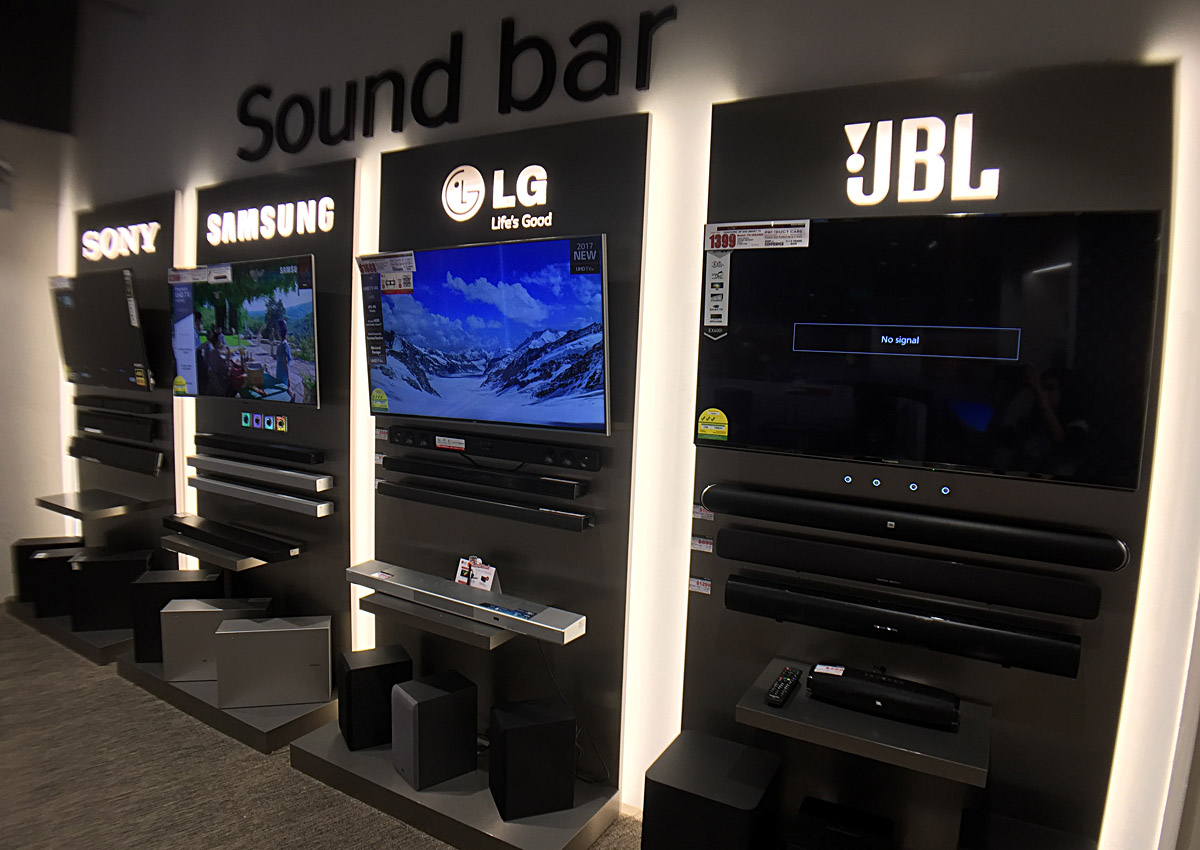A simple guide on how to create your home entertainment system

The living room is the heart of the home where family and friends spend time together, watching TV, movies, and listening to music.
For some, a home theatre may mean bulky hardware, messy cabling, and the hassle of assembling the system.
But setting up your own home entertainment system nowadays is not as daunting as you may think.
We visited Harvey Norman's Parkway Parade Superstore - which has recently expanded to the ground floor and offers furniture, bedding, and a new games hub - and got some useful tips from retail manager Mr Derrick Ee, who has 17 years of experience in the business.
Before you start shopping though, think about how much you want to spend on your home entertainment system. There is a wide range of audiovisual equipment that suits different needs and budgets.
And if you're not sure how to allocate your budget, a TV will usually take up 70 per cent of a shopper's budget, while the sound system takes up 30 per cent, Mr Ee said.
Don't forget to jot down the measurements of your living room too, as its size will affect your choices when selecting a suitable TV and sound system.
What makes up a home entertainment system?
The basic setup comprises a TV, sound system, and Blu-ray player.
Displays

In the home setting, a high-definition TV is the key to an immersive cinematic experience.
When selecting a TV, one of the first things people look at is the screen size.
But is a bigger TV always better?
This depends on the distance between the screen and the viewer, Mr Ee said.
With a viewing distance of 2.5 metres, you can select a display of up to 55 inches. He recommends a minimum display size of 55 inches for most homes.
While screen sizes are getting bigger, the profiles of TVs are becoming thinner.
In some of the newest TV models, they are so slim and weigh just a fraction of what other models do, that they can be mounted onto the wall using magnets instead of metal brackets.
Some people also find that bezel-less TVs give them a better viewing experience.
Another important factor to consider is picture quality.
This is where screen resolution (number of pixels) - comes into play. The higher the resolution, the more details can be displayed on the screen.
A full HD TV has a resolution of 1920 x 1080 with 2 million pixels, while the increasingly popular Ultra HD / 4K TV features a resolution of 3840 x 2160, with 8 million pixels.
For great image quality, you may also want to consider getting a TV with the latest display technologies such as OLED and QLED.
OLED (Organic Light Emitting Diode) lights up individual pixels which give the picture excellent contrast.
QLED (Quantum dot Light Emitting Diode) can reproduce true colour - 100 per cent of the colour that can be seen by the naked eye.
Meanwhile, TVs with HDR (high dynamic range) capabilities can also produce better contrast and richer colours.
Smart TVs also come with built-in Wifi that can connect to the Internet to download and stream digital content such as videos, games and even social media.
Although streaming content is gaining popularity, the overall quality hasn't quite caught up with what Blu-ray players can deliver.
Soundbars

They're small, sleek, and enhance the sound quality of your TV.
With their minimalist designs and user-friendliness, soundbars have taken over the place of traditional surround sound systems which are known for taking up space and involving lots of wires.
Soundbars are all-in-one speaker systems, often wireless and paired with a subwoofer.
They produce virtual surround sound that is comparable to the audio experience you can get from regular surround sound systems.
And with a price range from $199 to $2,599, how do you choose a suitable soundbar for your home?
Matching the length of the soundbar to the size of the TV can help create a good audiovisual experience, Mr Ee advised. For instance, a 5.1 soundbar would complement a 65-inch TV.
Those looking for an even better audio experience can look beyond 2.1 soundbars and consider 5.1 or 7.1 models.
Top-of-the-range soundbars come with an additional pair of speakers that are placed behind the viewer and features the latest surround sound technology Dolby Atmos which produces three-dimensional sound that moves around the viewer.
Many of these soundbars also come with built-in Bluetooth, which allows you to stream music from other devices such as your smartphone, tablet, or PC.
Accessories are important too

So, you've got a TV with beautiful pictures and a set of speakers with great sound, the next thing to look at is how these devices are connected.
Upgrading your HDMI cables can help ensure the consistent performance of your home entertainment system, Mr Ee said.
That's because a typical home is filled with a lot of wavelengths which can cause signal interferences. This may in turn affect the quality of the picture or sound of audiovisual equipment, he explained.
Why shop for a home entertainment system at Harvey Norman?

Harvey Norman has a team of experienced retail sales staff who are knowledgeable about the latest advancements in audiovisual technology.
They can advise you on selecting a home entertainment system that is best suited to your budget and needs, and also perform in-store demonstrations of the different displays and sound systems you're interested in.
The retail chain also has a policy that lets customers shop with confidence, offering perks such as price guarantee, exchange, reservation, delivery, as well as product care services.
For more stories on home-styling ideas and inspiration, check out AsiaOne's Home Works special section.